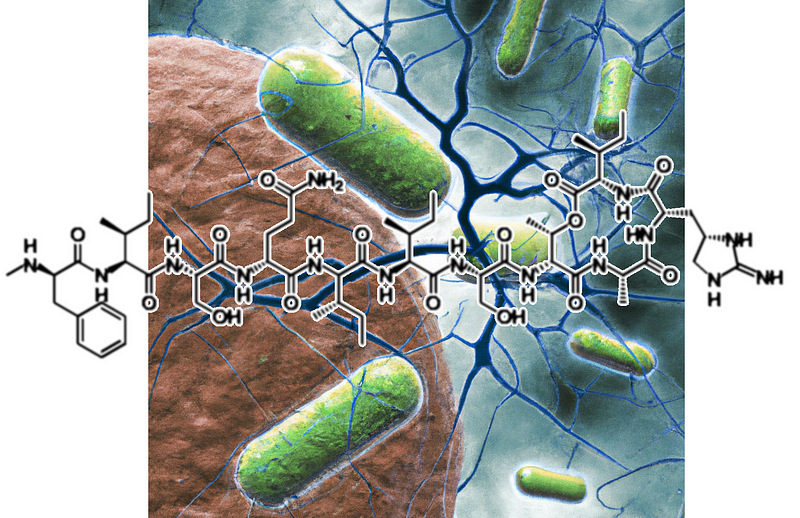A New Dawn for Antibiotics: The Promise of Teixobactin
Written on
Chapter 1: Understanding Antibiotics
The quest for new antibiotics has taken a positive turn with the discovery of a novel class that targets both the outer walls and inner membranes of bacteria.

The rise of antibiotic resistance among bacteria is a pressing concern in healthcare, largely driven by human behavior and the misuse of these crucial drugs. While new antibiotics are occasionally approved, they often belong to existing classes rather than being entirely innovative solutions. As a result, these medications are less effective, as bacteria adapt to them with relative ease. However, recent advancements have unveiled a promising antibiotic derived from natural sources, although its clinical application may pose challenges.
Before we explore this exciting development in basic science with significant medical implications, it’s essential to clarify what antibiotics are and how they differ from antivirals, particularly in the context of their misuse.
Antibiotics are specifically designed to kill bacteria or inhibit their growth without harming humans or other treated organisms. It’s critical to emphasize that antibiotics do not affect viruses, which are fundamentally different entities that do not qualify as living organisms. For viral infections, we have antivirals, which operate through distinct mechanisms and are ineffective against bacterial infections.
Understanding the distinction between antibiotics and antivirals is crucial, as misinformation contributes to one of the most significant preventable issues in medicine. The overuse and misuse of antibiotics—such as prescribing them for viral infections—expose bacteria to these drugs continuously, leading to the emergence of resistant strains. Some "superbugs" have developed resistance to nearly all available antibiotics, which poses a serious threat to public health.
Consequently, it is vital to combat misinformation to prevent antibiotic misuse, while also focusing on the development of new antibiotics. The ideal scenario involves discovering entirely new classes of antibiotics, as modifications of existing drugs are quickly rendered ineffective due to bacterial adaptation.
Finding novel families of antibiotics is no simple task. They must effectively eliminate bacteria while being safe for human use. Additionally, regulatory requirements mandate a clear understanding of how these new antibiotics function to ensure their safety and enhance their efficacy.
The Weingarth group at Utrecht University has made significant strides in this area by elucidating the mechanism of action of Teixobactin, a molecule produced by a soil bacterium to outcompete others in its environment. Teixobactin features a unique chemical structure and exhibits minimal bacterial resistance. It targets two components integral to bacterial cell envelopes, making it a potential candidate for safe human use.
Previous research has demonstrated that Teixobactin is effective against otherwise resistant pathogens, including Staphylococcus aureus, Streptococcus pneumoniae, and harmful strains of Enterococci. Furthermore, animal studies have indicated that Teixobactin can aid recovery from severe bacterial infections. While this does not confirm its status as a new drug, the findings are promising and warrant further investigation.
Section 1.1: Mechanism of Action
Teixobactin operates by penetrating the outer bacterial membrane and targeting a vital component known as "Lipid II." This molecule connects the rigid outer membrane, called peptidoglycan, to the inner lipid membrane. Teixobactin disrupts this entire complex, obstructing the growth of both the peptidoglycan and lipid layers, ultimately leading to cell lysis.
The elongated structure of Teixobactin allows it to bind to Lipid II in a unique manner, forming a supramolecular structure that compromises membrane integrity. This interaction results in the loss of crucial phospholipids from the inner membrane, causing bacterial leakage and cell rupture while simultaneously inhibiting the synthesis of peptidoglycan and membrane lipids. The presence of Lipid II, found exclusively in bacteria, makes Teixobactin a promising candidate for developing a new generation of antibiotics.
Limited natural resistance to Teixobactin at present offers hope for mitigating the adverse effects of misuse in the future, although ideally, such misuse should be avoided altogether.
The first video, When Antibiotics Don't Work (full documentary) | FRONTLINE - YouTube, delves into the challenges of antibiotic resistance and the implications for public health.
Section 1.2: Insights from Research
Key insights from the study reveal that the soil bacterium Eleftheria terrae is the source of Teixobactin. Researchers cultivated large volumes of this bacterium to obtain sufficient amounts of Teixobactin for their experiments. Encouragingly, other research groups have successfully synthesized Teixobactin, opening avenues for its potential use as an antibiotic.
Chemically, Teixobactin is classified as a peptide, a type of small protein that contains rare amino acids and unique chemical groups. Its structure exhibits a beta-like secondary configuration upon polymerization, resembling a fibrous form, as demonstrated in experimental studies.
Chapter 2: Future Perspectives
The second video, Good News: We're finally finding new antibiotics | The Big Story - YouTube, highlights recent breakthroughs in antibiotic discovery and the importance of innovative research in combating resistance.
In conclusion, while the development of Teixobactin shows promise, history reminds us of the need for responsible use to prevent the pitfalls of past antibiotic misuse. The future of antibiotics may hinge on our ability to learn from previous mistakes and harness new discoveries responsibly.